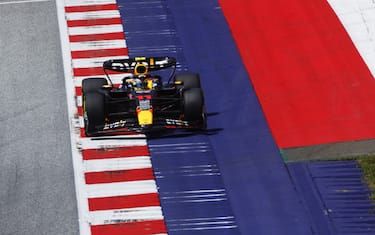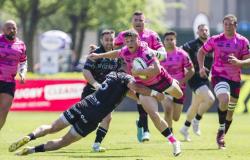Track limits are a rule that has always caused a lot of discussion in Formula 1. But what are track limits and what are the sanctions that are applied? Here’s what the FIA regulations say and why Norris deservedly took pole in the Shanghai Shootout qualifying. GP China, the weekend live on Sky and streaming on NOW
CHINA GP, HIGHLIGHTS QUALIFYING SHOOTOUT
Times taken away and never returned. Times deleted and then reappeared, as in the case of Lando Norriswho thus gained pole in the Shootout qualifying Shanghai. Once again the discussion on track limits, runway limits and application of the regulation. As already happened last year (Austria, Austin), even in China the ranking was influenced by the decisions made at the table commissioners.
Why wasn’t Norris penalized?
In the case of the British of McLarenteam principal Andrea Stella underlined how his lap had been canceled because the stewards had imagined that by running wide from the last corner had also gained in the launch of the following round. However, the data highlighted that Norris had been slowed down by the exit onto the gravel, losing almost 3 tenths.
What are track limits (or runway limits)
They simply are runway limits within which the single-seaters must remain during qualifying and the race. The regulation has been implemented in recent years to avoid “cuts” of the route that could give one pilot an advantage over another. Track limits are the white lines that run around the edge of the circuit and establish a boundary that drivers cannot cross. Pilots are not allowed to exceed these limits and may incur a penalty if all of them four wheels exceed the limit defined. FIA stewards can make drivers serve a penalty if they believe an advantage has been gained.
in-depth analysis
Norris, time taken away and returned: here’s why
What the sporting regulations say: article 33.3
“Pilots have to do every reasonable effort to use the track at all times and they cannot leave it without a justified reason. Drivers will be judged to have left the track if no part of the car remains in contact with it and, for the avoidance of doubt, white lines that define the edges of the track they are considered part of the track, but the curbs are not. In the event that a car leaves the track the driver can re-enter, however, this can only be done when it is safe to do so and without gaining any advantage. TO absolute discretion of the race director can be given the opportunity to regain the position he had before leaving the track.”
in-depth analysis
Track limits, in the rain it’s better to ‘free all’
What are the penalties for track limits?
Violations may result in different sanctions depending on the session in which the drivers take part. During a session free testsany violation will typically result in termination cancellation of times on the lap of the car. During the qualificationspilots will also have to deal with the cancellation of their lap time. In most corners of a track, exceeding the limits will result in the cancellation of that lap, but if a driver commits the violation in thelast curveon the pit straight, it will come the time of the next lap was also cancelled. During a Grand Prix, every driver is allowed three violations before he is shown one black and white flag: A further violation will result in a five-second penalty and a fifth violation will see the driver given one 10 second penalty.

The previous
Track limits nightmare: 47 times cancelled!
Tags: regulation track limits






